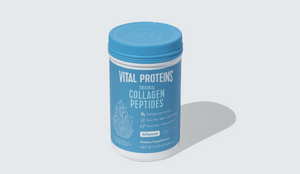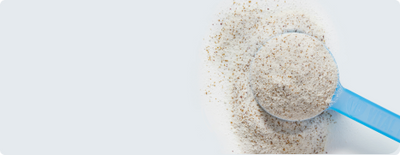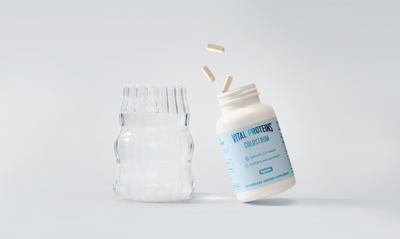On any given bad hair day, the answer to “what hair type do I have?” might be “problematic.” But in actuality, hair falls under four main types. Knowing this is key to properly taming that mane, as it helps you determine which products to use and which to steer clear of— just as you would a skincare routine.
Ready to learn yours, once and for all? Who knows, you might even possess the rarest hair type. Keep reading to see what the hair experts have to say.
How do you determine your hair type?
Determining hair type requires playing the part of a hair detective. For this,Tracy Ftacek, Founder & Owner of Pretty Convenient Salon + App, recommends starting with clean, wet hair that is product-free. From there, she says, “take note of the differences in the hair density and texture between the front, back and sides of your hairline.”
If your hair doesn’t form any waves or curls, your hair is straight, says Nikki Goddard, certified hair stylist and makeup artist with an associate degree in cosmetology. If it forms an ‘S’ shape, it’s either wavy or curly.Kristina Maccaro, Owner of Love Lane Salon, agrees, adding thatadditional factors such as hair density, diameter, porosity, natural oil and elasticity all come into play.
For those with curly hair, knowing your curl pattern does matter.“Curl or loop patterns of the mane refer to a curly type, while spirals or zig-zig shape means that hair might be kinky,” explains Goddard.
Once you have taken note of these different factors, keep that detective hat on. That’s because you can match these factors to the different hair types. For instance,Vincent De Marco, hair stylist and Owner of Vincent Hair, says that hair that is the diameter of the cortex (middle layer of many thick hairs) is small, then the hair is fine. But if it has a wider diameter, the hair would be considered coarse, or thick.

what are the four types of hair?
The hair types are most commonly broken down usingthe Andre Walker Hair Typing System. From there, each type is ableto be broken down into different subsections.
Type 1: Straight
Let’s get straight to the point with this one, shall we? According to Maccaro, straight hair has no curl pattern and isnaturally super straight from root to tip. While it’s prone to being shiny, it also has a tendency to get greasy since the straight strands cause the hair’s natural oils to seep down and cover the entire length of the hair.
Type 2: Wavy
Those with wavy hair get the best of both worlds: Their hair type is between straight and curly. But wavy hair isn’t as easy to upkeep as you’d think. “It often becomes frizzy and is also difficult to style (keeps shape for 3-4 hours),” explains Goddard. She adds that this hair type needs extra care during winter and summer to prevent damage.
Type 3: Curly
As mentioned previously, curly hair typically has strands that are in an “S” shape. Curly-headed folks know the struggles of maintaining curly hair better than anyone: “Because of the curly texture, Type 3 hair is commonly on the dry side as the natural oils from the scalp are not heavy enough to move from root to ends of the curl pattern,” says Maccaro.
Type 4: Afro-textured hair
You might be surprised to learn that Afro-textured hair has no discernible curl pattern. In some people, Goddard says that it might be in a “Z” shape with sharp angles. It can also be extremely fragile. “It shrinks when it becomes moist and has fewer cuticle layers, which makes it more prone to damage,” says Goddard.
what is the rarest hair type?
You might be surprised to learn thatthe rarest hair type is Type 1A hair, a subsection of straight hair, explains Maccaro. It’s defined by hair that is completely straight and baby fine. Ftacek adds that it’s soft with a noticeable shine. While this sounds easy to manage, it does come with one very major drawback: It’s extremely difficult to curl.
The answer to “what is the rarest hair type” can be looked at in a personalized way.“Every person has a different mix of texture density and individual strand size, like a fingerprint, explains hairdresser, Megan Schnell.
So if you wanted your chance to feel unique, this is it: “You can inherit texture from one side of your family and density, and even cowlicks from the other.”

what are the 5 types of hair?
By now, you know that hair is classified under four main types. But just like your skin has many different classifications, so does the hair.
According toFtacek,the five types of hair are as follows: fine, medium, coarse, thick and thin. This can be broken down into two different subcategories so that it’s easily understood, starting with the hair’s diameter.
Fine: Since the hair is so fine, Ftacek says that it can be easily damaged. Treatments are required to build up its resiliency.
Medium: This is actually the most ideal hair structure since Ftacek says that it’s most resilient to heat styling, hair coloring and texture services.
Coarse: The cortex of these strands are larger in circumference. Because of this, though, Ftacek explains that it tends to be dry and requires more moisture and hydration.
Second subcategory: the density of hair.
Thick: Thick hair may be a pain to manage sometimes, but this thick density makes it easy to hold curls and try different hairstyles.
Thin: Thin hair responds the best to weekly deep cleansing and volumizing products for styling.
Truthfully, De Marco says that hair types can fall under up to 15 different categories.Dr. Chacon agrees, adding that hair may be classified as being oily, dry or combination.
“In addition, making a distinction between natural and color-treated or chemically processed hair is also important as hair that has been processed typically requires more and greater levels of care and nurturing,” she explains.
For all hair types, be sure to give your locks what it’s craving. We’re talking keratin and biotin, which are featured ingredients in Vital Proteins Hair Boost™.













